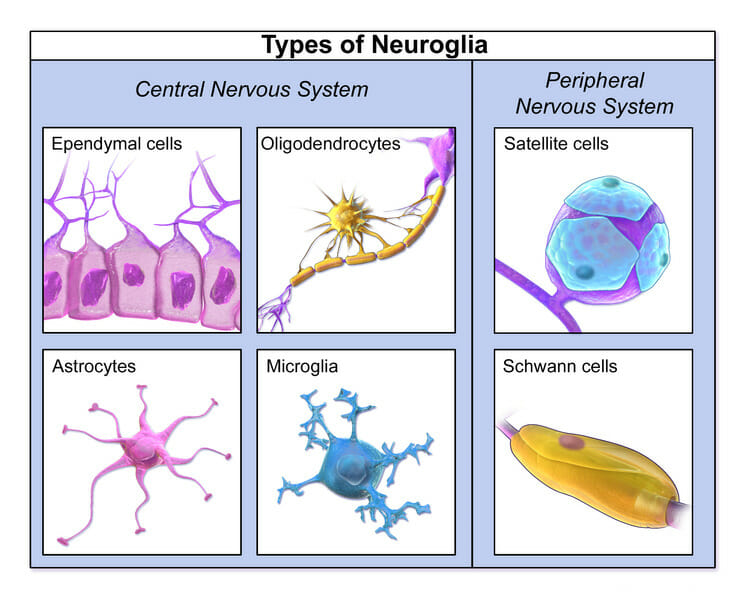Playlist
Show Playlist
Hide Playlist
Synapses Are Junctions between Neurons
-
Slides 10 Types of Tissues Meyer.pdf
-
Reference List Histology.pdf
-
Download Lecture Overview
00:01 Before we do so, it is important to now understand that neurons communicate with each other through synapses, junctions. 00:14 And if you look at the image shown here, this is on the bottom right-hand side of the screen, you can see a large soma or a large cell body of a neuron and you can see a synapse occurring. 00:31 A synapse is a process from another axon coming into contact with another neuron as you see here. And they're called different names, depending on whereabouts the axon comes in contact with the next neuron. In case of the one labelled, the axon is in contact with the soma or the cell body so it is called an axosomatic synapse whereas others might have a contact on the dendritic branches of the cell or on the axonal branch of the neuron. So in that case its called axodendritic or axoaxonic. I am not going to go through the details of the structure of the synapse, but basically you have a presynaptic and a postsynaptic membrane and a synaptic cleft or a gap across with the neurotransmitter substance from one axon is going to transport across and depolarize the cell membrane of the next neuron and therefore the impulse will travel forward.
About the Lecture
The lecture Synapses Are Junctions between Neurons by Geoffrey Meyer, PhD is from the course Nerve Tissue.
Included Quiz Questions
Which of the following is a synapse between an axon and the cell body of a neuron?
- Axosomatic
- Axoaxonic
- Axodendritic
- Axosynaptic
- Axosecretory
Customer reviews
5,0 of 5 stars
| 5 Stars |
|
5 |
| 4 Stars |
|
0 |
| 3 Stars |
|
0 |
| 2 Stars |
|
0 |
| 1 Star |
|
0 |





